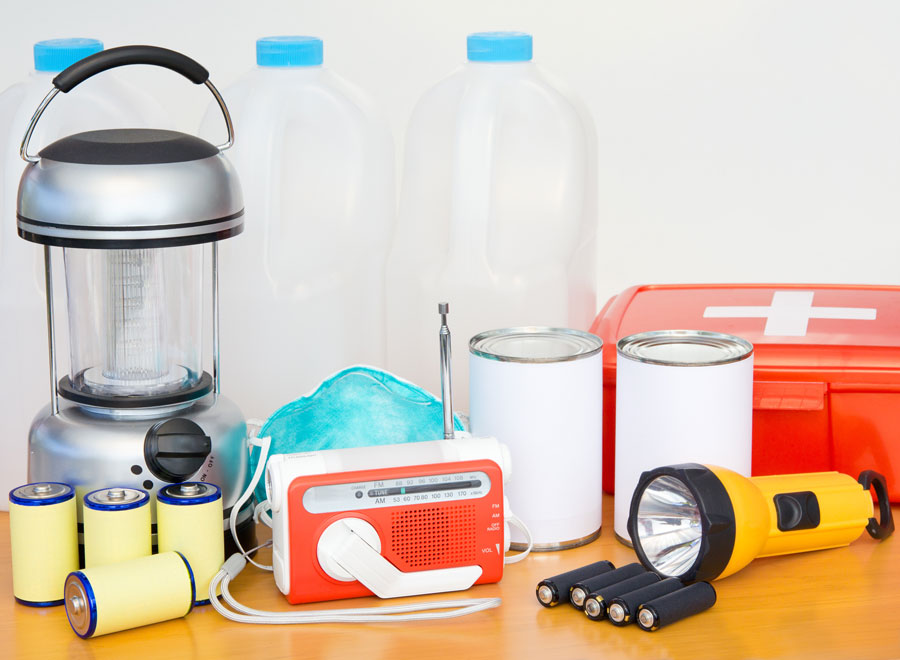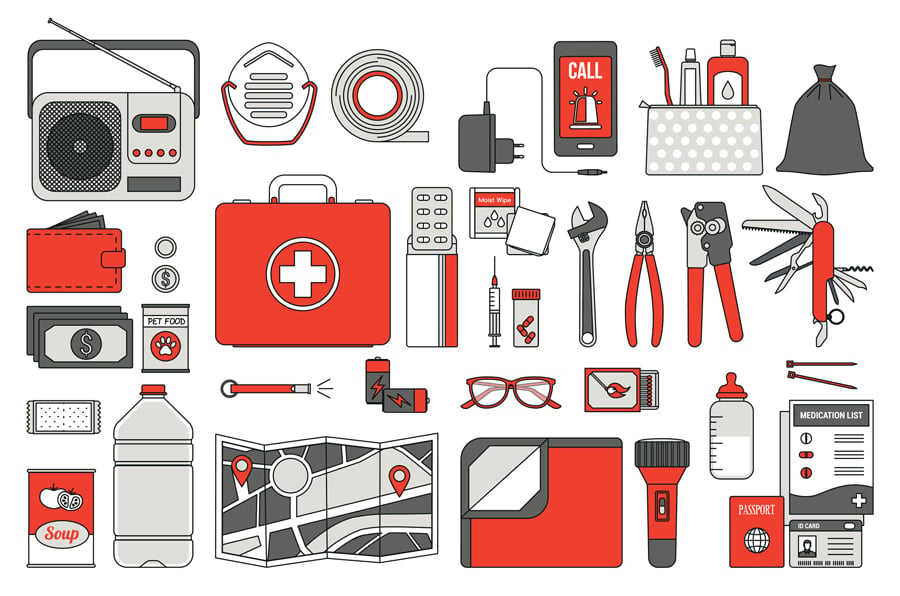
Creating a home emergency kit is one of those tasks most of us keep putting off. It can be simple, but sometimes a little expensive. But, start working on building up your kit, even if it’s just a little at a time. Having the right stuff on hand is essential to easing your stress level during emergency situations.
Once built, be sure to tell family members where you’ve stored your emergency kit/stockpile. Plus, make sure everyone knows where the circuit breaker, the water and gas shutoff valves are located.
If you’re worried about having space needed to build an emergency kit, think through your storage options. A Cook portable shed could be what you need to add to your backyard this winter.
The shed’s strong and sturdy floor system ensures your stuff is secure and ready to use during an emergency situation. We use pressure treated lumber, which comes with a written lifetime warranty to prevent against fungal decay and termite damage.
First, run through the potential or reasonable situations for your area of the country and list the essentials you might need in those situations. Then, take into consideration the size of your home and how much storage space you have available.
Once you’ve decided on where you’ll be storing these items, here are some next steps:
- Build the list of supplies you need
- Build the list of food items you need
- As you begin filling up your stockpile, print a list of all items and the expiration dates to be stored with it.
- Set a calendar reminder for 1 month prior to the first item that expires. That way you know when to begin refreshing your kit and nothing goes to waste.
Not sure where to start? Here are 5 important things to stock up on now to start your winter emergency kit.
Batteries and flashlights
Having extra batteries in a variety of sizes (most commonly double or triple A) on hand is a great way to stay prepared. Batteries power many things you might need from clocks, to smoke alarms, to flashlights and much more. If the power goes out, you’ll want to have plenty of flashlights on hand, at least one for each family member. Plus, you’ll want to keep portable batteries fully charged so you can recharge phones and tablets.
Alternative heat sources
Keeping warm is essential during the winter months for your home to stay comfortable and safe. Although wearing layers and blankets can help a ton, it’s also a good idea to have an alternative source of heat on hand. Fireplaces or kerosene space heaters are options if they are operated properly until the central heating system is restored.
It’s important to make sure these backup heating sources are clean and operational beforehand. Schedule a professional to clean your chimney now and do a trial run of any portable heaters. Go through the proper usage instructions with everyone in the house as well. If you’re using any heat source that might have the potential for carbon monoxide poisoning, be sure you have a detector that is battery powered to monitor this.

Tools/materials for emergency repairs
It’s smart to plan for minor home repairs that can happen during the winter months, like a tree branch falling and breaking a window. Have the basics, like heavy duty duct tape, salt or sand, plastic sheeting and a basic toolset on hand for those repairs that could be necessary during the emergency.
Communication system
Because phone lines can be damaged by winds and ice, it’s important to always keep your cell phone charged at all times. Have a car charger and battery powered charger on hand in case of an extended power outage. If your home service is generally spotty, sending an SMS message typically works better.
Items for the pantry
A good winter practice is to get into the habit of shopping ahead. When you are buying your weekly groceries, grab a couple of extra non-perishable things to gradually stock up the pantry. Remember to rotate canned goods and bottles of water to keep items as fresh as possible. Here are some other things to consider having on hand during the winter.
Preparing before winter weather strikes is essential in any area. A great way to stay prepared is with an emergency kit inside a durable Cook shed. A small amount of planning now will result in a lot of comfort and less stress even in a serious situation.
{{cta(’98a33e97-e87d-4bef-a5c6-79899374a7b3′,’justifycenter’)}}
